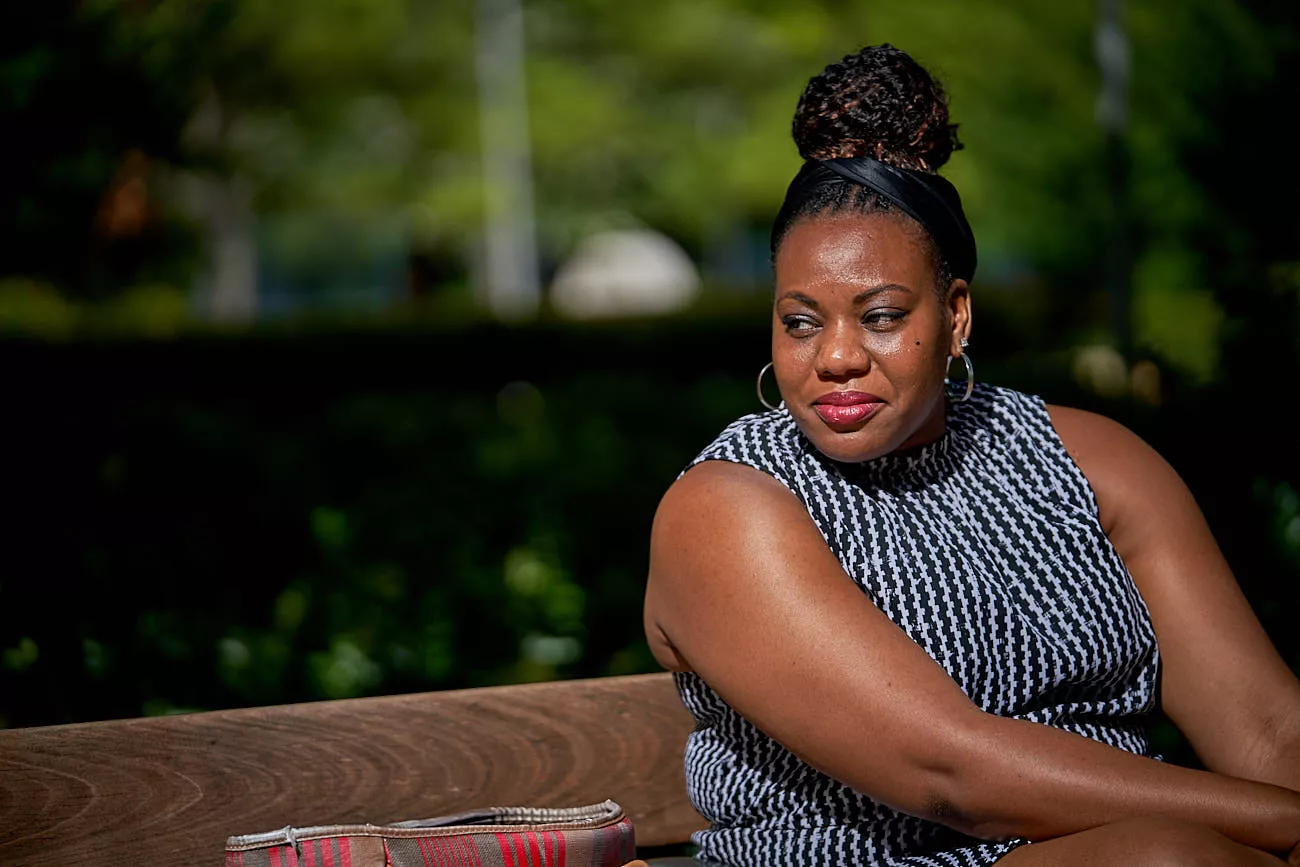There’s always going to be someone who’s going to say there’s never enough time to plan culturally relevant lessons. My pushback to that is, ‘Well, how was there enough time to plan a lesson that wasn’t culturally relevant?’ It’s not about adding more to the plate. It’s about changing what we’re doing with what’s already on the plate.
I was shown this quote by Adrienne Rich that really stuck out to me about the power that lies in the hands of teachers. Adrienne Rich said when those who have the power to name and socially construct reality choose not to see you or hear you, whether you are dark skinned, old, disabled, female or speak with a different accent or dialect than theirs, when someone with the authority of a teacher describes the world and you are not in it, there’s a moment of psychic disequilibrium, as if you looked into a mirror and saw nothing. I ask teachers, ‘Is that the responsibility that you took on when you got into education? How does this match what your current practice is? How does it match what your current practice is not?’
When people reflect on their why and really spend some time analyzing, to get to the depths of, ‘Who am I and what am I bringing to the table?’ Asking, ‘Who am I benefiting in my classroom and who am I harming?’ Because you’re going to be doing both of those at the same time.
When teachers are teaching the same thing they learned 30 years ago in school, there’s a good chance you’re causing harm. Because if that same curriculum harmed other people who didn’t look or have the same identity as you and you’re perpetuating that curriculum, then you’re part of it too now. No one goes in front of a classroom to present information with the objective of harming someone. If that’s not the objective, then we have to ask, ‘Is it happening? And if so, how is it happening? Why is it happening, and what do I need to do to make sure that doesn’t happen.’ In the space of teaching, it’s about, ‘How do I give more kids interactions of what the world around them really is about.’
The biggest challenge in achieving education justice is the lack of collaboration. It’s more than just reaching out for a guest speaker in your classroom. It’s about understanding why the way a lesson was done causes harm. Or what hidden history exists in the content of teaching Christopher Columbus, of teaching Thanksgiving, of teaching slavery. What’s being denied the student? And when teachers can think about the support they need and admit, ‘I’m not the expert. I need someone else to collaborate with me,’ that collaboration opens a space.
That collaboration piece in education is so critical because that’s where partnerships get built from home to school. It’s how students feel they can have a trusting adult in the school building that they go to everyday. It’s how the community begins to learn that it is part of the school.
That’s what I get to do with teachers – collaborating with them, modeling and discussing – I feel like that’s part of the mission I set out to do, to be a resource to more teachers who are struggling and haven’t taken that big leap yet to move into exploring what it looks like to have a social justice focus in your class. What does it look like to have socially and racially conscious pedagogy, a curriculum that sustains kids for who they are and who history has said that they are not?
When it comes to teachers who are skeptical about the importance of socially relevant education, I always start by taking teachers back to their why. I ask what their goal was when they went into education. And when I hear their goals, which are usually centered on helping kids develop, being a contributing member to society, the power of education to transform, I ask them ‘How are you doing that currently in your role?’
Some people view the work as a loss, but when we focus on equity, social justice and inclusion, there’s no loss for anyone when we have culturally relevant diverse learners entering the world.
To be able to break a cycle, someone has to take that first step, which means to evaluate curriculum, rethink and redesign it, not waiting for someone else to design it but have the passion around their why that says, ‘I want to be a part of this so much that I’m willing to help create.’


